Indigenous Public Interest Design Planning Committee 2025
The Indigenous Public Interest Design Institute (PIDI) Planning Committee was formed to collect, share and celebrate stories and design projects by Indigenous peoples (e.g. Native American, First Nations, American Indian, aboriginal, Alaskan Native, Pacific Islanders, and/or those culturally tied to their homelands and lifeways).
The seven members of the Committee are leaders and representatives of diverse Indigenous communities. Their leadership honors the fact that those who are from Indigenous communities, and dedicate their time/attention to those communities, are best suited to plan these discussions and learning opportunities.
The common theme will be “A Place of Our Own: How we know, make and use space.”
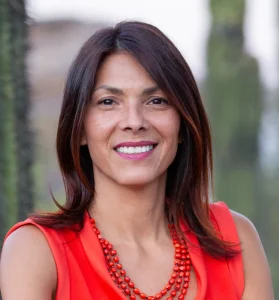
Wanda Dalla Costa, AIA, FRAIC, LEED AP
(ᓀᐦᐃᓇᐤ | Saddle Lake Cree Nation)
Principal at Tawaw Architecture Collective
Architect and Institute Professor, Wanda Dalla Costa (she/her) is a member of Saddle Lake Cree Nation. In her professional and academic roles, she is an advocate for Indigenous peoples, employing design to uplift Indigenous culture, while ensuring authenticity in the built environment. She is the Founder and Director of the Indigenous Design Collaborative at ASU. At her firm, she oversees Indigenous design and research in both offices (Phoenix and Calgary). With a passion for design, and degrees in both Architecture and Urban Design, she works at all scales, from custom interior elements to master planning. Before forming her firm in 2010, she worked in Calgary for over a decade building high rise residential, commercial projects, and designing culturally driven buildings for nations across Canada. She is an Honorary Fellow of the Royal Architecture Institute of Canada, and licensed to practice in ON, AB, SK, CA and AZ.
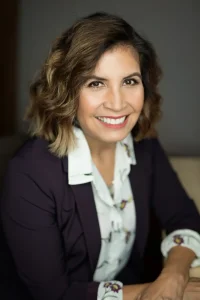
Tammy Eagle Bull, FAIA, NCARB, AICAE
Professor of Practice in Architecture, Indigenous Design Collaborative, The Design School Herberger Institute for Design and the Arts, Arizona State University
Tammy Eagle Bull, FAIA, NCARB, AICAE (Oglala Lakota) Professor of Practice in Architecture, Indigenous Design Collaborative The Design School Herberger Institute for Design and the Arts Arizona State University Tammy Eagle Bull became an architect in fulfillment of a long term family vision. Long before she was born, her grandfather told her father and uncle that one of them should go to architecture school and the other should study law. His reasoning was that someday their Oglala Lakota community in Pine Ridge, South Dakota would need architects and lawyers and it would be best if those professionals came from within. A generation later, Tammy fulfilled her grandfather’s wish as an architect working with her tribe and tribes across the nation. Tammy is the co-founder of Encompass Architects, p.c., working for over 20 years to improve Indigenous communities. She received a Bachelor of Science in Design – Architectural Studies from Arizona State University and a Master of Architecture from the University of Minnesota-Minneapolis. She is a licensed architect with over 40 years of architectural design and project management experience. Tammy is recognized as the first Indigenous woman to be a licensed architect in the United States. Tammy was the 2018 recipient of the Whitney M. Young Jr. Award of the American Institute of Architects (AIA). The national award distinguishes an architect that embodies social responsibility and actively addresses a relevant issue. She was also elevated to Fellow within the AIA, a distinction for architects who have made a significant contribution to the profession and society and exemplify architectural excellence. She was honored as the American Indian Council of Architects and Engineers Inaugural Legacy Award recipient in 2018. In 2023, she was selected a member of the first cohort of Distinguished Alumni of the Herberger Institute of Design and the Arts at Arizona State University. Tammy is an enrolled member of the Oglala Lakota Nation.
Her article/interview A Lasting Effect of Colonization: Detachment from the Built Environment | Pine Ridge (American Roundtable, 2020) can relate to our point of making a declaration and going further than an acknowledgement
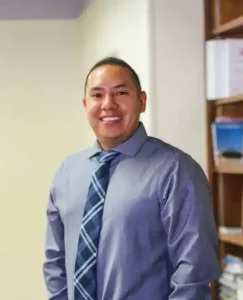
Theodore Edaakie, AIA, NCARB, AICAE
(Pueblo of Isleta)
Architect at Studio Southwest Architects
Theodore Edaakie, a tribal member of Isleta Pueblo, is a registered architect focusing on community-oriented projects including planning, education, public/civic, and governmental projects. With over 12 years of extensive professional experience, Theodore Edaakie has dedicated his career to working with a wide array of tribal communities throughout the United States. During his architectural education at the University of New Mexico, Theo’s research and studio design projects were influenced by his understanding of underserved communities, integrating meaningful cultural context, and often considered the potential impact he could make when he could eventually become his tribe’s first licensed architect. Theo actively supports indigenous professionals through various board and committee appointments, including the American Indian Council of Architects and Engineers (AICAE), National Council of Architectural Registration Boards (NCARB), and local chapter of the American Institute of Architects.
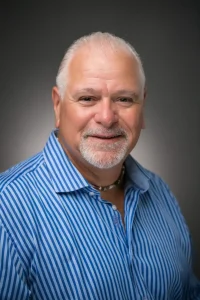
Mark Harding
(Wôpanâak | Mashpee Wampanoag Tribe)
Mark Harding is a social, political, and culturally active citizen of the Mashpee Wampanoag Tribe where he formally served as both the elected Vice Chairman and Treasurer of the tribe. While in those positions, he was responsible for the advancement of several economic development initiatives and capital projects for the nation. He was also a founding member of the tribe’s gaming authority, established the Tribal Historic Preservation Office and was the tribe’s first President of the Mashpee Wampanoag Community Development Corporation. In 2020, he and his diverse team formed Sovereign Resiliency Partners and has distinguished itself by its detailed body of work and numerous designations and qualifications enabling the company to earn multiple federal contracts and grants. SRP helps tribes move toward energy sovereignty to save money and improve energy reliability and security. Their 360 Degree Tribal Resilience Framework enables tribal governments to plan and stage energy investments that promote the wellbeing of their citizens through enhanced public services and expanded economic opportunity.
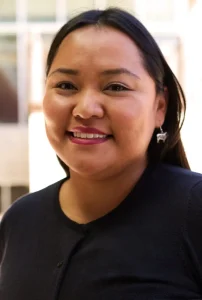
Michaela Shirley, MCRP
(Diné | Navajo Nation)
Michaela Paulette Shirley (Diné), MCRP, identifies with the Water Edge and Bitter Water clans, with her maternal grandfather from the Salt clan and her paternal grandfather from the Coyote Pass clan. She was raised in Kin Dah Lichii in northeastern Arizona on the Navajo reservation. With over ten years of experience in Indigenous planning, community development, community engagement, qualitative research, conference planning, and technical assistance training and workshops, she is now serving as the KSU Tribal TAB Program Manager. Currently, Michaela is pursuing a PhD in the UNM American Studies Department.
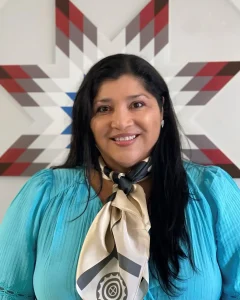
Dr. Laura Harjo
(Mvskoke | Muscogee (Creek) Nation)
Professor, University of Oklahoma
Laura Harjo is a Muscogee (Creek) scholar, award-winning author, Indigenous planner, and teacher. She is an associate professor and the department chair in Native American Studies at the University of Oklahoma. In the 2023-24 academic year Harjo was a Distinguished Visiting Fellow in Native American and Indigenous Studies at Emory University, which is located in Muscogee homelands. Her scholarly inquiry focuses on “community.” Harjo’s research and teaching centers on three areas: (1) spatial storytelling, (2) anti-violence-informed Indigenous architecture and community planning, and (3) community-based knowledge production. These three areas of inquiry support a larger project of Indigenous futurity. Harjo’s book Spiral to the Stars: Mvskoke Tools of Futurity (University of Arizona Press, 2019) employs Muscogee epistemologies and Indigenous feminisms to offer a community-based practice of futurity. Her book won the 2020 Beatrice Medicine Award for Best Published Monograph and the 2021 On the Brinck Book Award + Lecture.
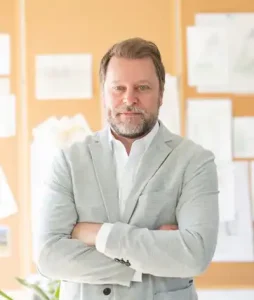
Brent Wall, PLA, ASLA
(Kanza | Kaw Nation)
Landscape Architect / Owner, LAUD Studio
Brent Wall is a professional landscape architect and horticulturist living with his family in Oklahoma City. Over the last 25 years, Brent has been involved in conceiving and constructing meaningful and sustainable landscapes across Oklahoma and the region. Brent has worked in both the public and private realms on a range of scales and complexities. During his tenure with the City of Oklahoma City Parks and Recreation Department, Brent was involved in the construction of numerous public park improvements and served on steering committees for the Myriad Botanical Gardens, Project 180, and Scissortail Park. Currently Brent is the Director of LAUD Studio, a landscape architecture practice focused on parks and recreation, urban design, campus and residential landscapes. His work for LAUD Studio entails the day to day management of the firm along with directing landscape architecture and oversight for construction documentation. Brent has served as Professor of Practice for the University of Oklahoma Landscape Architecture program teaching design studios and courses in plant materials and computer technology. Brent’s service to his profession and community include a position on the OU Board of Visitors for the Landscape Architecture Program, Past-President of the Oklahoma Chapter of the American Society of Landscape Architects, Heritage Hills Neighborhood Association as well as the General Council for the Kaw Nation of Oklahoma.

